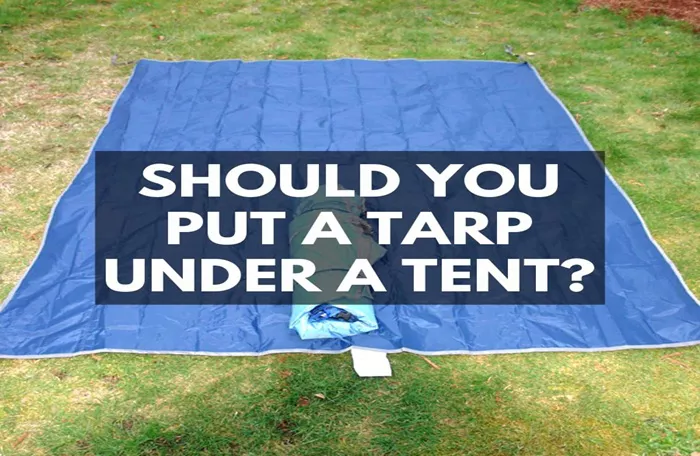When you go camping, placing a tarp under your tent is one of the smartest things you can do. This simple layer, often called a ground cloth or footprint, protects your tent and makes your camping experience better. But why is it so important? Let’s break it down.
What Is a Ground Cloth?
A ground cloth is a waterproof sheet placed between your tent and the ground. It can be made of polyethylene, nylon, or specialized tent footprint materials. Some campers even use Tyvek, a durable, lightweight material often used in construction.
Key Reasons to Use a Tarp Under Your Tent
Protects Your Tent Floor from Damage
The bottom of your tent faces constant friction from rocks, sticks, and rough terrain. Over time, this can wear holes in the fabric. A tarp acts as a shield, preventing punctures and extending your tent’s life.
Pro Tip: Choose a tarp slightly smaller than your tent’s base. If it sticks out, rainwater can pool on top, leading to leaks.
Keeps Moisture Out
Even if your tent has a waterproof floor, moisture can seep through over time. A tarp adds an extra barrier against dampness, especially in rainy or dewy conditions.
Did You Know? Some campers use two tarps—one underneath and one inside the tent—for maximum dryness.
Provides Insulation
A tarp helps block cold air from the ground, keeping your tent warmer. This is especially useful in cold-weather camping.
Makes Cleaning Easier
Dirt, mud, and debris won’t stick directly to your tent. Instead, they collect on the tarp, which you can easily shake off or wipe clean.
Adds Extra Comfort
A tarp smooths out uneven ground, making your sleeping area more comfortable. No more waking up to sharp rocks poking your back!
Choosing the Right Tarp
Material Options
- Polyethylene (Poly) Tarps – Cheap and waterproof but bulky.
- Nylon/Silnylon Tarps – Lightweight and packable, great for backpacking.
- Tyvek – Tough, breathable, and lightweight.
- Specialized Tent Footprints – Made to fit specific tent models.
Size Matters
Your tarp should be slightly smaller than your tent’s floor. If it’s too big, rainwater can run off your tent and pool underneath, causing leaks.
Common Mistakes to Avoid
Letting the Tarp Stick Out
If the tarp extends beyond the tent, rainwater will collect between the tarp and tent floor. Always tuck excess material underneath.
Using a Worn-Out Tarp
A ripped or thin tarp won’t protect your tent. Inspect it before each trip and replace it if needed.
Skipping the Tarp to Save Weight
Even ultralight backpackers should use a lightweight ground cloth. A small puncture in your tent floor can ruin a trip.
DIY vs. Pre-Made Footprints
DIY Tarps
- Pros: Cheaper, customizable.
- Cons: May not fit perfectly, risk of being too large.
Pre-Made Tent Footprints
- Pros: Exact fit, designed for your tent.
- Cons: More expensive.
Conclusion
A tarp under your tent is a small investment with big benefits. It keeps you dry, protects your gear, and makes camping more comfortable. Whether you’re a weekend camper or a long-distance backpacker, never skip this simple but essential step.
Happy Camping!
Related topics:
How to Get In and Out of a Fishing Kayak

